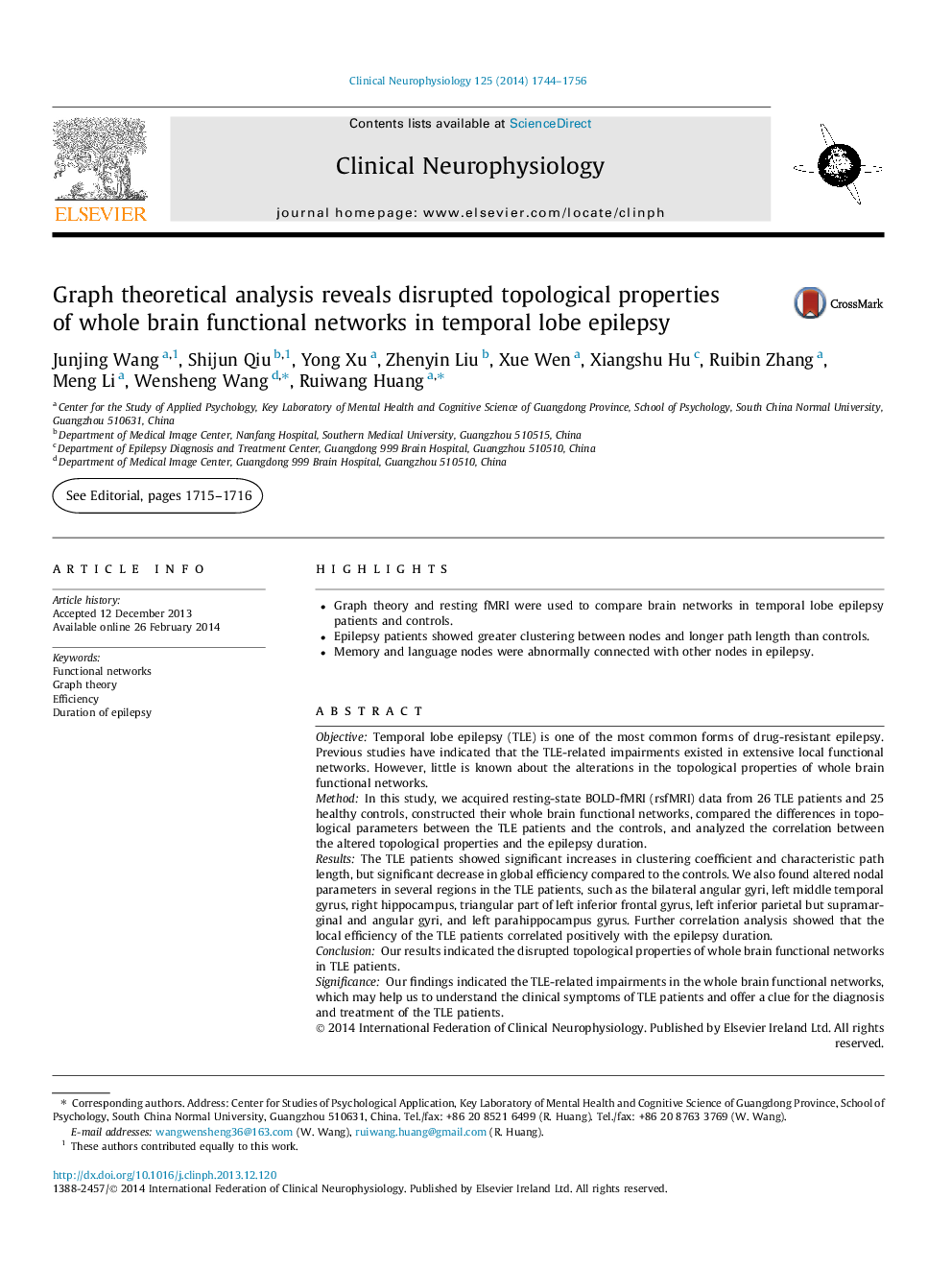| Article ID | Journal | Published Year | Pages | File Type |
|---|---|---|---|---|
| 3043172 | Clinical Neurophysiology | 2014 | 13 Pages |
•Graph theory and resting fMRI were used to compare brain networks in temporal lobe epilepsy patients and controls.•Epilepsy patients showed greater clustering between nodes and longer path length than controls.•Memory and language nodes were abnormally connected with other nodes in epilepsy.
ObjectiveTemporal lobe epilepsy (TLE) is one of the most common forms of drug-resistant epilepsy. Previous studies have indicated that the TLE-related impairments existed in extensive local functional networks. However, little is known about the alterations in the topological properties of whole brain functional networks.MethodIn this study, we acquired resting-state BOLD-fMRI (rsfMRI) data from 26 TLE patients and 25 healthy controls, constructed their whole brain functional networks, compared the differences in topological parameters between the TLE patients and the controls, and analyzed the correlation between the altered topological properties and the epilepsy duration.ResultsThe TLE patients showed significant increases in clustering coefficient and characteristic path length, but significant decrease in global efficiency compared to the controls. We also found altered nodal parameters in several regions in the TLE patients, such as the bilateral angular gyri, left middle temporal gyrus, right hippocampus, triangular part of left inferior frontal gyrus, left inferior parietal but supramarginal and angular gyri, and left parahippocampus gyrus. Further correlation analysis showed that the local efficiency of the TLE patients correlated positively with the epilepsy duration.ConclusionOur results indicated the disrupted topological properties of whole brain functional networks in TLE patients.SignificanceOur findings indicated the TLE-related impairments in the whole brain functional networks, which may help us to understand the clinical symptoms of TLE patients and offer a clue for the diagnosis and treatment of the TLE patients.
